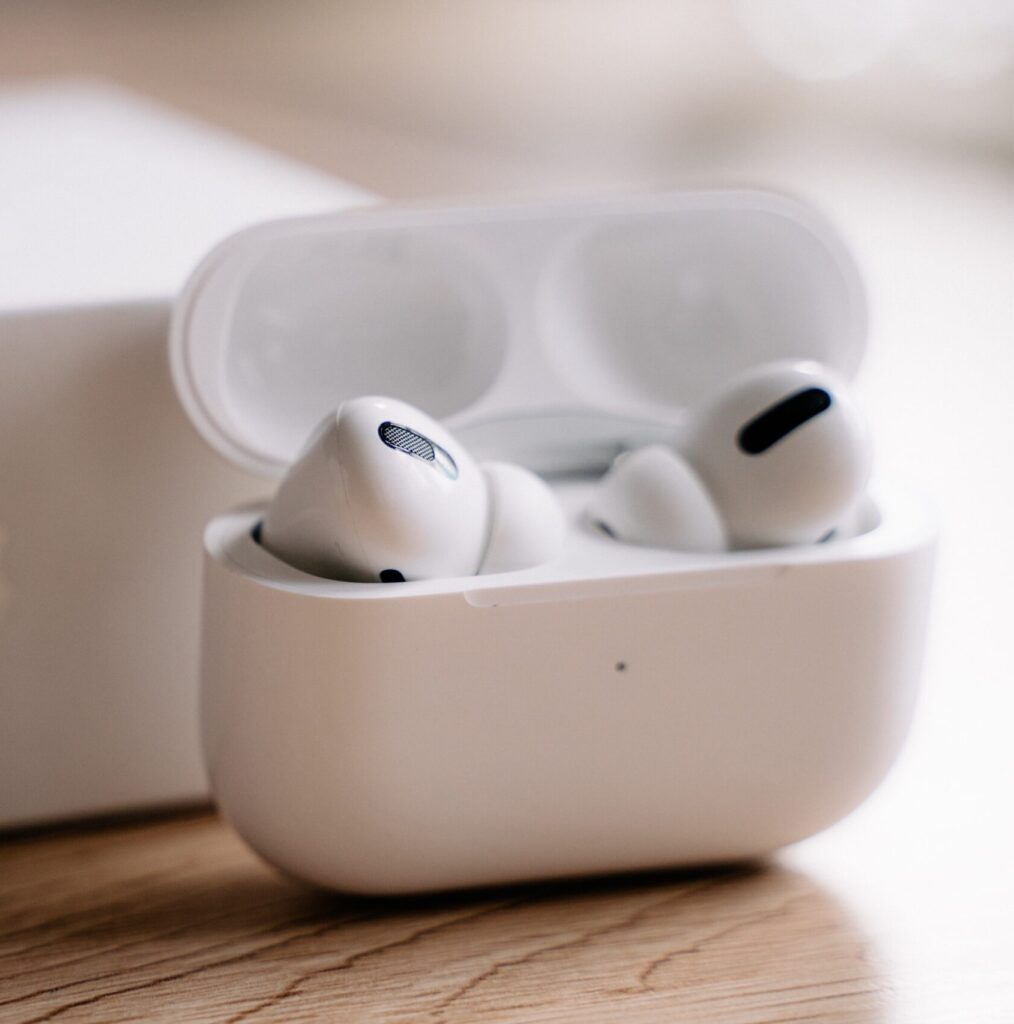Acceptability of Apple AirPods Pro by People with Hearing-in-noise Problems
Video summary
Project goals
A segment of the population without hearing loss present important hearing difficulties in noisy environments that have a serious impact on their quality of life and mental health, and that increase their risk of developing social isolation, anxiety and depression. In fact, approximately one out of ten people who present to the clinic reporting communication difficulties in noisy venues cannot be helped because they do not have a measurable hearing loss. This causes severe frustration on both clients (who are left without any guidance or recommendation most of the times) and clinicians (who often report to feel confused and disempowered due to the absence of evidence-based recommendations for these clients).
Aims and Hypothesis
This project aimed to investigate to what extend the AirPods Pro hearables improve the hearing experience of people with normal audiograms but speech-in-noise hearing difficulties, and whether the target population would continue using this technology in similar situations in the future. We hypothesized that the directionality provided by the AirPods Pro would provide an acoustic advantage that would improve the end-users’ hearing experience.
Methodology
Seventeen normal-hearing adults (9 females, 21-59 years) with speech-in-noise hearing difficulties participated in this study. This project used (1) objective measures to quantify the acoustic benefit provided by the AirPods Pro; (2) laboratory measures to evaluate whether the intelligibility of the participants increased with the AirPods Pro in a controlled noisy environment; and (3) real-life measures where participants could rate their satisfaction, usability and perceived value of the technology in the venues where they usually struggle communicating with their peers.
Key findings
Acoustic measures showed that the AirPods Pro hearables provide a moderate improvement on speech clarity in noisy situations. Consistent with this finding, laboratory measures showed that participants understood more words in noise when they were wearing the AirPods Pro – on average they understood 66.4% of the words with the AirPods Pro, against 54.6% intelligibility when they were not wearing them. Furthermore, real-life measures demonstrated that participants wearing the AirPods Pro in venues where they usually have hearing difficulties could understand their peers “a bit more”, and they rated their participation in conversations as “a bit better”. This study also revealed a large dispersion in the reported satisfaction with the devices, with only five participants willing to continue using the AirPods Pro in similar situations in the future. The most relevant barriers to continue using this technology were that the hearing benefit was not substantial enough, social factors (the AirPods Pro are not yet socially viewed as an assistive listening device), and comfort.
Conclusion
This research will inform audiologists and clinicians about the perceived value of the AirPods Pro as an assistive listening device for people with normal audiograms and speech-in-noise hearing difficulties, which may assist them in providing more informed recommendations to their clients with this hearing profile. Moreover, the barriers identified in this project may inspire manufacturers the implementation of marketing campaigns and/or the development of new technologies that improve the uptake by their end users. This project has also validated a research methodology that could be applied to evaluate the value of other technologies.
Objective Evaluation of AirPods Pro 2 Active Noise Cancellation
Introduction
Noise-induced hearing loss is a growing concern, particularly for those who frequently use smartphones to listen to music or other audio content at high volumes. The World Health Organisation estimates that as many as 1 billion young people could be at risk of hearing loss due to their listening habits. Additionally, background noise interference, which tends to mask or distort speech, makes it harder for people with hearing loss to communicate during phone and video calls. Active Noise Cancelling (ANC) technology can help combat these issues. By lowering background noise, ANC can protect hearing while enhancing audio clarity and comprehension without the need to turn the volume up to potentially damaging levels.
In this study, we set out to provide objective evidence of how effective the ANC technology in the widely used AirPods Pro 2 really is, and discover what are the differences and improvements compared to the previous generation AirPods Pro.
Findings and Discussions
Our findings showed that ANC in the AirPods Pro 2 significantly reduces background noise by an average of 27 dB across a range of frequencies. Notably, there was a distinct improvement in reducing low-frequency noise (up to 35 dB at 250 Hz) over the AirPods Pro 1. This is especially beneficial as many environmental noises, like those from as planes, trains, traffic, air-conditioning units and industrial equipment, consist of low-frequency sounds.
The AirPods Pro 2 also introduce a new “Adaptive Transparency” feature. When the AirPods Pro are in Transparency Mode so the wearer can hear sounds around them, loud ambient sounds are automatically reduced, ensuring a more comfortable experience.
Reducing background noise has several benefits. It lowers the risk of noise-induced hearing loss by reducing the need to turn up the volume. Additionally, it enhances the clarity of calls and music, and it may even reduce stress related to exposure to loud noise.
Conclusion
The study shows that AirPods Pro 2 are an effective solution for safeguarding hearing and enhancing audio listening in noisy environments. Compared to AirPods Pro 1, they offer a significant improvement in low-frequency noise reduction. Combined with features like automatic reduction of harmful noises, personalised sound amplification, and beamforming advancements, the AirPods Pro 2 offer an attractive, cost-effective option for those seeking to improve listening and communication in noisy places while also protecting their hearing.
Further Information
Interested in learning more? Watch one of our Soundbites webinars discussing the topic further here:


